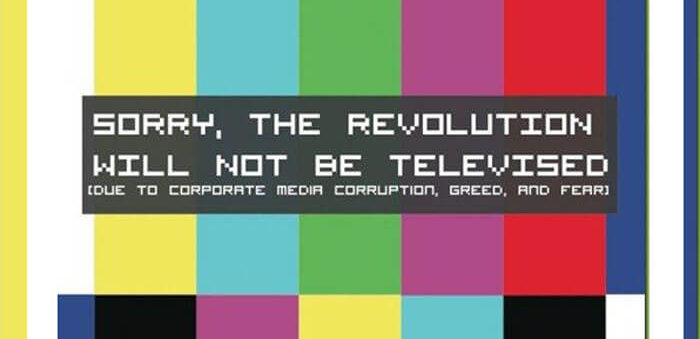The world of the Slovak non-tabloid mainstream media used to be easy to understand. Almost wherever you looked neoliberalism reigned supreme. A few years ago, all around the world the tide turned and that wave hit Slovakia as well. Where is the media heading now and what does this change mean?
The state used to be the embodiment of evil. Where the state brought corruption and the general degeneration of civil society, the market brought freedom, efficiency and the flourishing of the whole of humankind. The choice was obvious. The anti-communist appeal gave this reasoning more justification. A strong government was part of the communist regime and its dismantling meant overcoming everything that was wrong with it. Neoliberal enthusiasts thrived and dictated the ideology of the day.
They were not alone. After the Velvet Revolution of 1989, international organizations supported pro-market forces and the local neoliberals aligned themselves with their ideological counterparts from abroad. The match was perfect. The fight against the evil empire could continue even after the evil was gone and the left was reduced to an improper ideological position in decent company.
The left has been on the losing side of history in the West since the 1980s. This so-called ‘lost decade’ in the global South was the result of enforced neoliberal policies. The 1990s already saw a slight ideological movement as critical empirical evidence about the ‘trickle-down economics’ entered the mainstream and in 1998 the term “post-Washington consensus” was coined by the then World Bank chief economist Joseph Stiglitz.
At this time the majority of Slovaks were celebrating the victory against the semi-authoritarian regime of Valdimír Mečiar and the neoliberal reforms of the first government, which were dominated by right-wing parties. The term ‘reform’ was like the ‘expelliarmus’ spell in Harry Potter as it disarmed everyone who dared to oppose Slovak prosperity.
One step left?
It is hard to tell when the ideology started to change and what triggered it. A book on the history of ideological transformations in the Slovak media after 1989 is waiting to be written. A symbolic date to focus on could be Martin M. Šimečka’s resignation from his post as editor-in-chief of the neoliberal daily SME in 2006, as a result of his ideological differences from the right-wing perspective of the owner and some of the journalists in the economic section of the paper, in addition to other factors.
From there, it was still a long journey to the current ideological positioning of the Slovak non-tabloid newspapers. This position could be defined as incoherent at least.
The heyday of neoliberal ideology is gone and its replacement remains unclear.
Peter Schutz in SME is still fantasizing about the free market, but Michal Havran occasionally defends a socio-economic leftist position. In Denník N – another important daily that has recently split from SME – the head of the opinion section, Roman Pataj even praises the state in his columns and calls for a decent leftist party to replace the ruling corrupted conservative and xenophobic left. From reading Zuzana Kepplová (in SME) and Jana Shemesh (in Denník N) we can see that feminism is also gaining strength in what used to be right-wing strongholds. Finally, a fight against racism has become not only a way to criticize the government, but also an important part of the new social face of both SME and Denník N. A leftist perspective has found its way even into the pro-business economic newspaper, Hospodárske noviny thanks to a grant from SlovakAid. One of the articles from the series “The World Between the Lines” criticizes economic growth without any improvement of the living standards of the population; another focuses on rising social inequality in Brazil and another talks about Western corporations destroying nature outside of their homeland.
Serious empirical data is clearly missing from this sketch of the current ideological trends. More importantly, the shift to the left remains within the mainstream perspective. A decent leftist party is necessary for Pataj in order to prevent something worse then Syriza, which would be just as bad as the Slovak neo-Nazis. Shemesh’s feminism ignores the connection between sexism and capitalism and the fight against anti-migrant racism almost never takes into account the larger geopolitical issues that triggered migration.
The radical response?
So what does this slight shift to the left mean for the radical left in Slovakia? Most of all, it will require clearer positioning. The simple rejection of neoliberalism will be insufficient if the future is to be dominated by centrists arguing for an apolitical state with good governance. Anti-capitalism will have to confront more nuanced arguments as well as the belief that capitalism can be controlled in a way that will benefit everyone.
The radical left will have to deal with arguments about the Scandinavian model or about the right economic institutional setting working efficiently. Radical feminists might find opponents not only among the conservatives, but also in the mainstream media promoting liberal feminism. They will need to argue about what is missing from the mainstream feminist view. Radical ecologists will no longer fight against climate change deniers, but instead will have more sophisticated opponents arguing in favour of technological changes and global or European regulations that should be able to save us. To put it simply, the ideological fight will need to be more nuanced, but it will also need to be more empirically grounded and this will be a challenge for both the new mainstream left as well as the radical left.***
***
Tomáš Profant is a research fellow at the Institute of International Relations in Prague.
![Political Critique [DISCONTINUED]](https://politicalcritique.org/wp-content/uploads/2015/09/Political-Critique-LOGO.png)
![Political Critique [DISCONTINUED]](https://politicalcritique.org/wp-content/uploads/2015/09/Political-Critique-LOGO-2.png)
